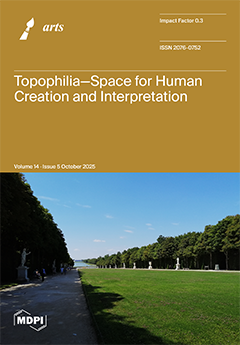This article examines tropes of (proto)colonialism in medieval European culture and
Raymonda (Раймoнда), a ballet that premiered in St. Petersburg in 1898 and is set during the Fifth Crusade (1217–1221). Juxtaposing premodern travel accounts with a postmedieval dance creation, this study illuminates how
[...] Read more.
This article examines tropes of (proto)colonialism in medieval European culture and
Raymonda (Раймoнда), a ballet that premiered in St. Petersburg in 1898 and is set during the Fifth Crusade (1217–1221). Juxtaposing premodern travel accounts with a postmedieval dance creation, this study illuminates how religious otherness, imperial ambitions, and feminine resistance frame representations of dance spectacle and spectatorship. Following a synopsis of the ballet, the subsequent section considers
Raymonda’s Muslim characters vis-à-vis medieval texts and images. Here, I incorporate Crusades-era sources, travel literature, and their accompanying iconography alongside the characterizations and aesthetics that pervade
Raymonda. These comparisons apprehend the racializing and (proto)colonial thrust of crusader ideology and Russian imperialism. The final section historicizes
Raymonda through medieval lyric and gestures toward an Afro-Islamicate ancestry of lyricism and ballet medievalism. Therefore, while traditional versions of
Raymonda project Islamophobia, I posit that a rigorous examination of the Middle Ages imbues this ballet with profundity and intercultural nuance. Ultimately, this article demonstrates how a combined study of premodern travel and postmedieval dance may help scholars challenge the Eurocentrism, colonialism, and Whiteness that pervade medieval studies and the art of ballet.
Full article




